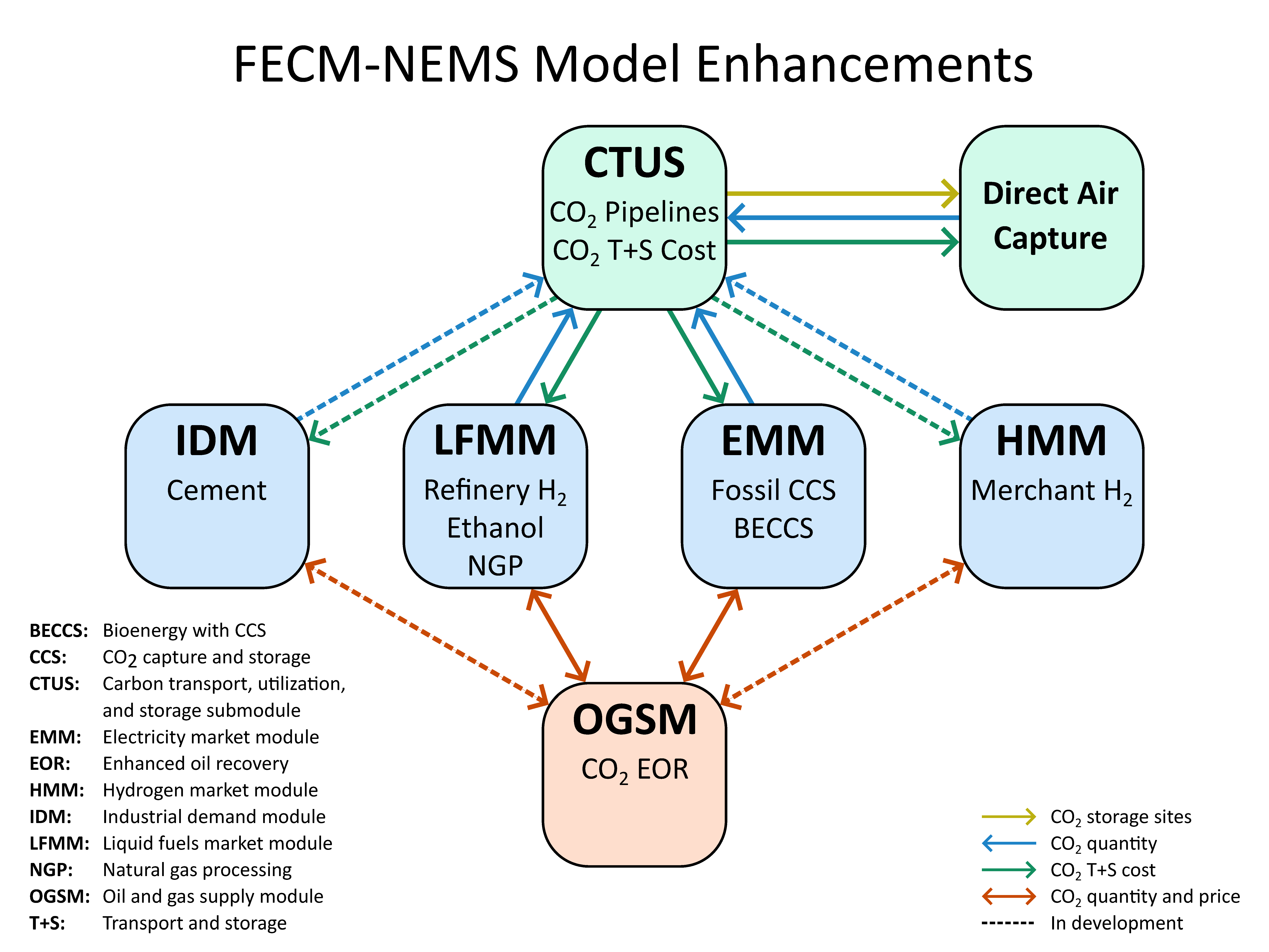Decarbonization: Resolving Uncertainty with Modeling + Engineering
With the passage of the Inflation Reduction Act (IRA), the United States is on the path to decarbonization. There will undoubtedly be twists and turns along the road, and the exact shape of the end state is not predictable, but it seems fairly certain that the energy economy ten or twenty years from now will look substantially different – and much less carbon intensive – than today.
Decarbonization and the energy transition pose challenges across several dimensions for decision-makers in government and industry. First, while the IRA puts the basic government policy framework and incentives in place, actual implementation and fine-tuning will be necessary. These tasks will need to be informed by forecasts of the potential impact of the IRA and other policies on energy supply mix, demand patterns, technology choice, and energy prices. To cite one example, the emphasis on capital intensive solutions, such as point-source carbon capture and nuclear power, will depend in part on projections of how successful other means, such as renewables and electricity storage, are at reducing emissions.
Second, the private sector will be faced with making investment decisions in a complex and uncertain environment. Forecasts that illustrate the range and probability of energy market outcomes will be necessary inputs to industry decision making. The power sector and industry broadly will have to decide, for example, where and when to install carbon capture, switch to hydrogen or ammonia fuels, invest in nuclear, or take the plunge into new industrial manufacturing technologies such as low carbon integrated steel processes.
Third, but not least, the new technologies must be made to work. Even with all the research, development, and demonstration to date, the engineering task ahead is huge. The IRA grants and subsidies may be enough to bring many of these technologies to market but there is no guarantee of success.
OnLocation is informing decarbonization decision-making with the National Energy Modeling System, for decades the primary energy market forecasting tool used by the federal government and others. For example, the study The Long-Term Strategy of the United States: Pathways to Net-Zero Greenhouse Gas Emissions by 2050, issued by the Executive Office of the President and the Department of State in November 2021, relied on NEMS projections developed by OnLocation. This work used a version of NEMS, customized by OnLocation for the Department of Energy’s (DOE) Office of Policy, with enhancements to reflect the potential role of hydrogen, biofuels, and industrial carbon capture in meeting the Administration’s decarbonization goals. NEMS is also used routinely by the Energy Information Administration for its Annual Energy Outlooks and special studies related to decarbonization and other energy issues.

OnLocation is currently further enhancing NEMS to include Direct Air Capture (DAC) technologies, a combined bioenergy and coal retrofit technology with carbon capture, and an enhanced representation of industrial carbon capture options such as for ethanol and cement. Other enhancements for NEMS in the planning stages include carbon capture via mineralization, weathering, and ocean sequestration. In addition, OnLocation is adding a new Hydrogen Market Module that will provide more granular projections of hydrogen production technologies, costs, volumes, transportation and storage, and end use. These enhancements, being developed for DOE, are important because of the expectation that technologies and fuels such as DAC and hydrogen will play a central role in decarbonization.
OnLocation’s parent company, KeyLogic, is providing R&D support to DOE’s decarbonization efforts through its role as the prime support contractor for the National Energy Technology Laboratory (NETL). KeyLogic’s efforts include work in traditional decarbonization areas, such as transportation of CO2 for enhanced oil recovery, simulation of geologic sequestration reservoirs, and management of seismic events associated with CO2 storage. In addition, KeyLogic is supporting NETL on cutting edge research, such as development of supercritical CO2 power plants, Bioenergy with Carbon Capture and Storage (BECCS), and direct capture of CO2 from the atmosphere. An important area of research is implementing carbon capture in the industrial sector, especially for industries where electrification is difficult or expensive. KeyLogic is also working on “decarbonization-adjacent” research, such as the extraction of critical minerals from coal waste.
KeyLogic is assisting NETL as the lab expands its research portfolio to include hydrogen, including H2 blending with natural gas, review of advanced hydrogen production technologies, and an assessment of research needs and opportunities related to hydrogen use in the decarbonizing power and industrial sectors.
The work being performed by OnLocation and KeyLogic is paralleled by other research and analysis organizations such as the Electric Power Research Institute (EPRI), headquartered in Palo Alto, California. One example is EPRI’s support of NETL’s National Carbon Capture Center in Alabama, an engineering testing site for pilot-scale technologies. In another technology test, EPRI cooperated with the New York Power Authority on a demonstration of hydrogen co-firing at an existing natural gas peaking plant. At the intersection of technology and economics, EPRI has performed work on assisting businesses develop plans for adjusting to the evolving and uncertain climate and carbon reduction policies. EPRI’s planned 2023 research agenda covers a wide gamut of decarbonization initiatives, ranging from workforce skill requirements for a decarbonizing power industry to accelerating the adoption of hydrogen.
The government and private entities creating the decarbonization path will require assistance with engineering, RD&D management, economic analysis, and forecasting. KeyLogic and OnLocation are providing support across all of these dimensions and will continue to provide assistance to government agencies and other organizations who are evaluating decarbonization pathways.
Contact us for more information about the OnLocation’s integrated energy modeling capabilities.

